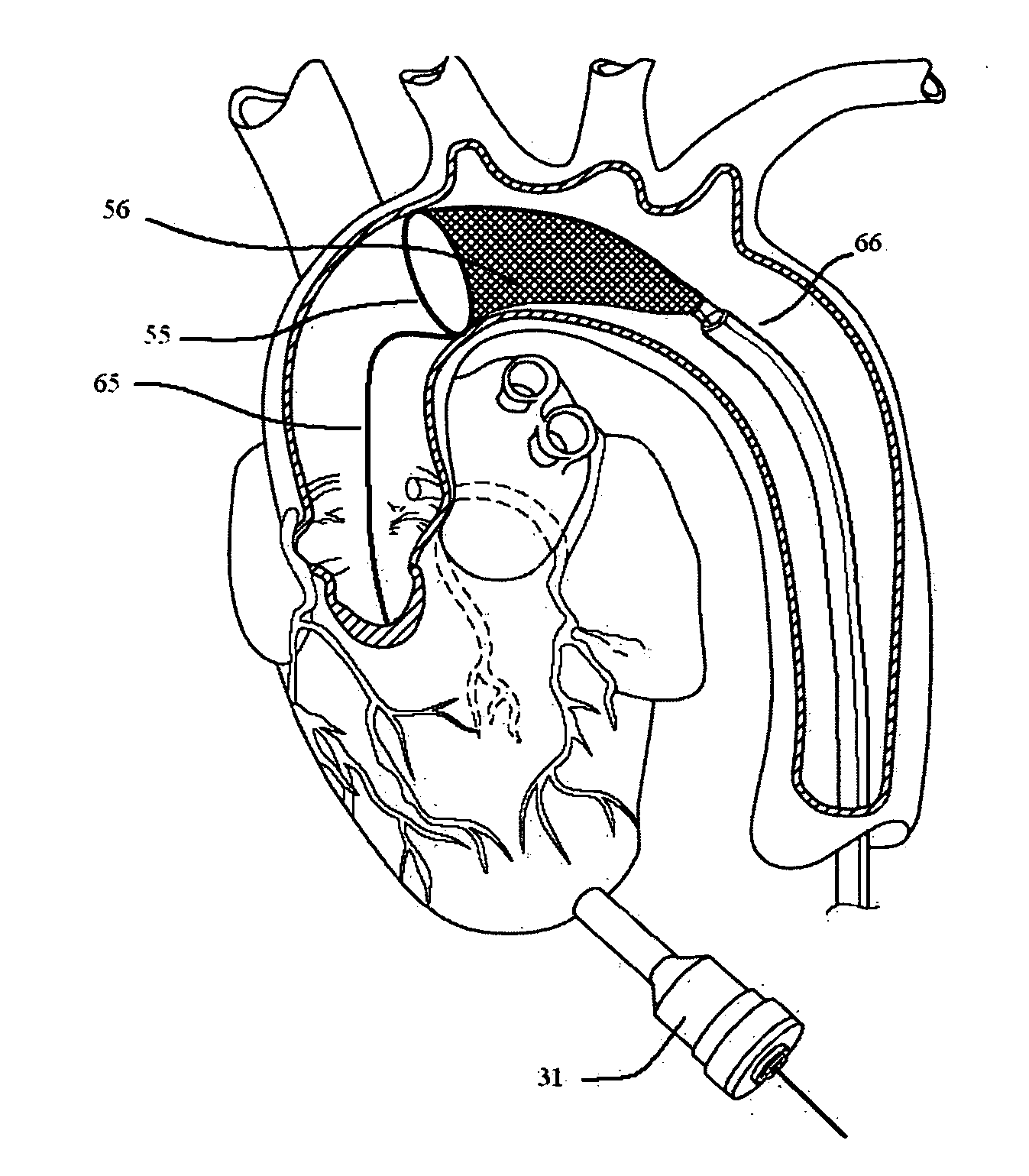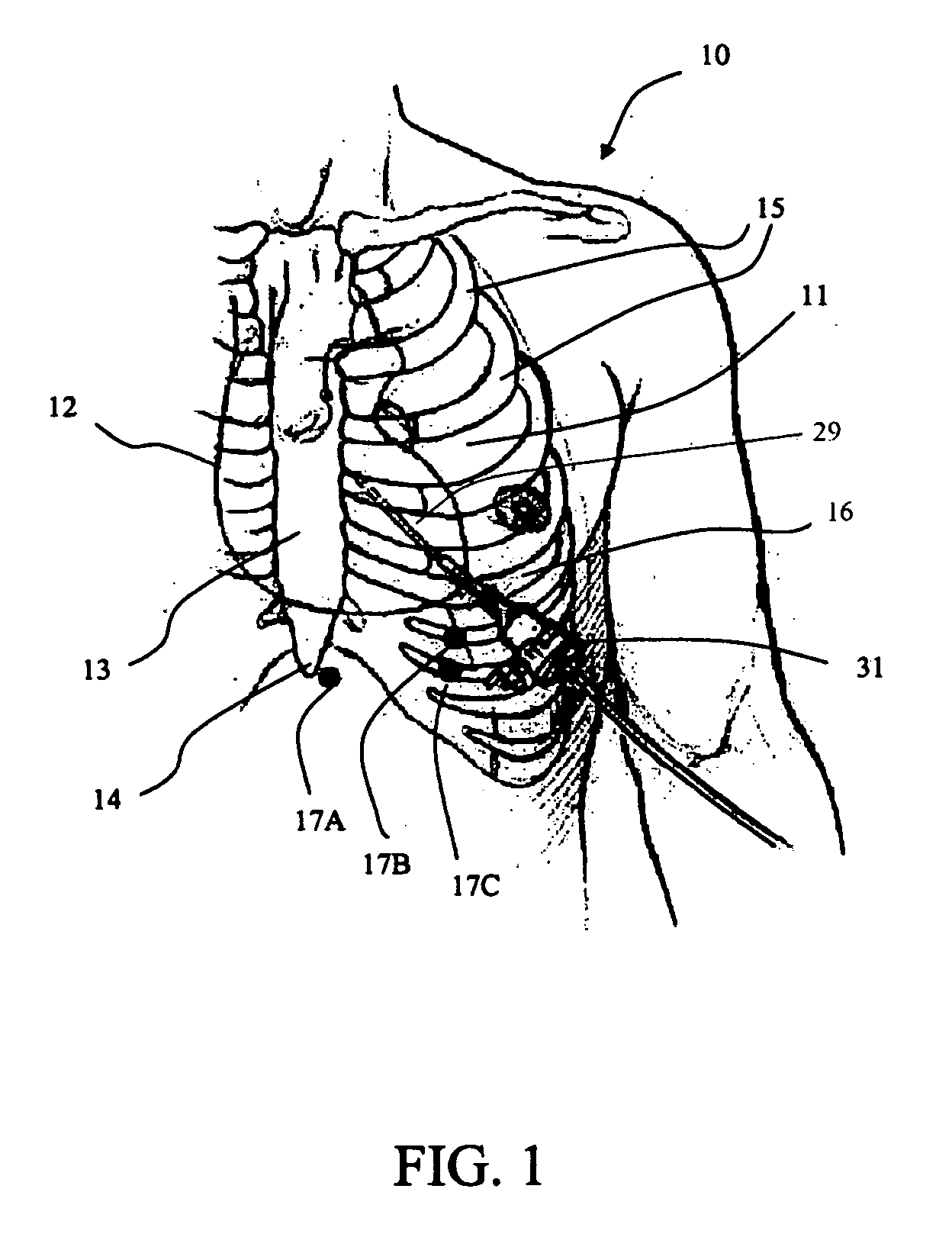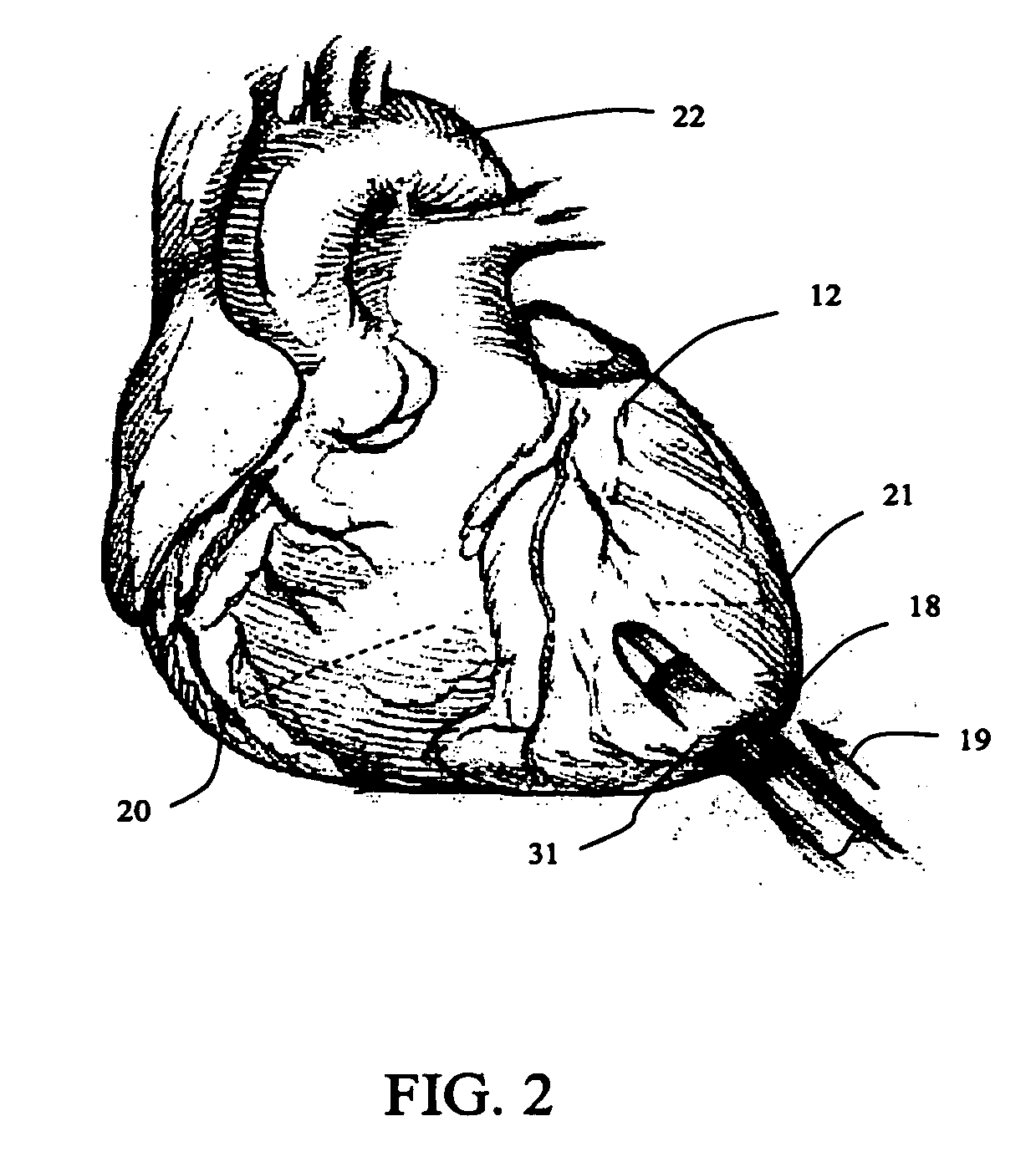Methods and systems for cardiac valve delivery
a technology for heart valves and delivery methods, applied in the field of cardiovascular surgery, can solve the problems of long and tedious open-heart valve repair or replacement surgery, prolonged hospitalization and painful recovery period for patients, and significant trauma
- Summary
- Abstract
- Description
- Claims
- Application Information
AI Technical Summary
Benefits of technology
Problems solved by technology
Method used
Image
Examples
Embodiment Construction
[0049]FIGS. 1 through 16 show embodiments of the methods and systems of the present invention for the repair, removal, and / or delivery of prosthetic valves, and also for providing distal embolic protection and a temporary valve during cardiovascular procedures.
Valve Delivery Method and Implantation System
[0050]FIG. 1 is a partial front view of the chest 11 of a patient 10 and shows the position of a surgical tool 29 in relation to other anatomical landmarks, such as the sternum 13, xiphoid 14, ribs 15, and heart 12. A surgical tool 29 is depicted as entering the body cavity through the fifth intercostal space 16 and through the apex of the heart 12. The surgical tool 29 is seen inserted through an access system 31. The surgical tool 29 may contain devices or systems used for surgical procedures in or on the heart or the greater vessels of the heart. In one embodiment of the current invention, the surgical tool 29 is a delivery system. In another embodiment of the current inventio...
PUM
 Login to View More
Login to View More Abstract
Description
Claims
Application Information
 Login to View More
Login to View More - R&D
- Intellectual Property
- Life Sciences
- Materials
- Tech Scout
- Unparalleled Data Quality
- Higher Quality Content
- 60% Fewer Hallucinations
Browse by: Latest US Patents, China's latest patents, Technical Efficacy Thesaurus, Application Domain, Technology Topic, Popular Technical Reports.
© 2025 PatSnap. All rights reserved.Legal|Privacy policy|Modern Slavery Act Transparency Statement|Sitemap|About US| Contact US: help@patsnap.com



